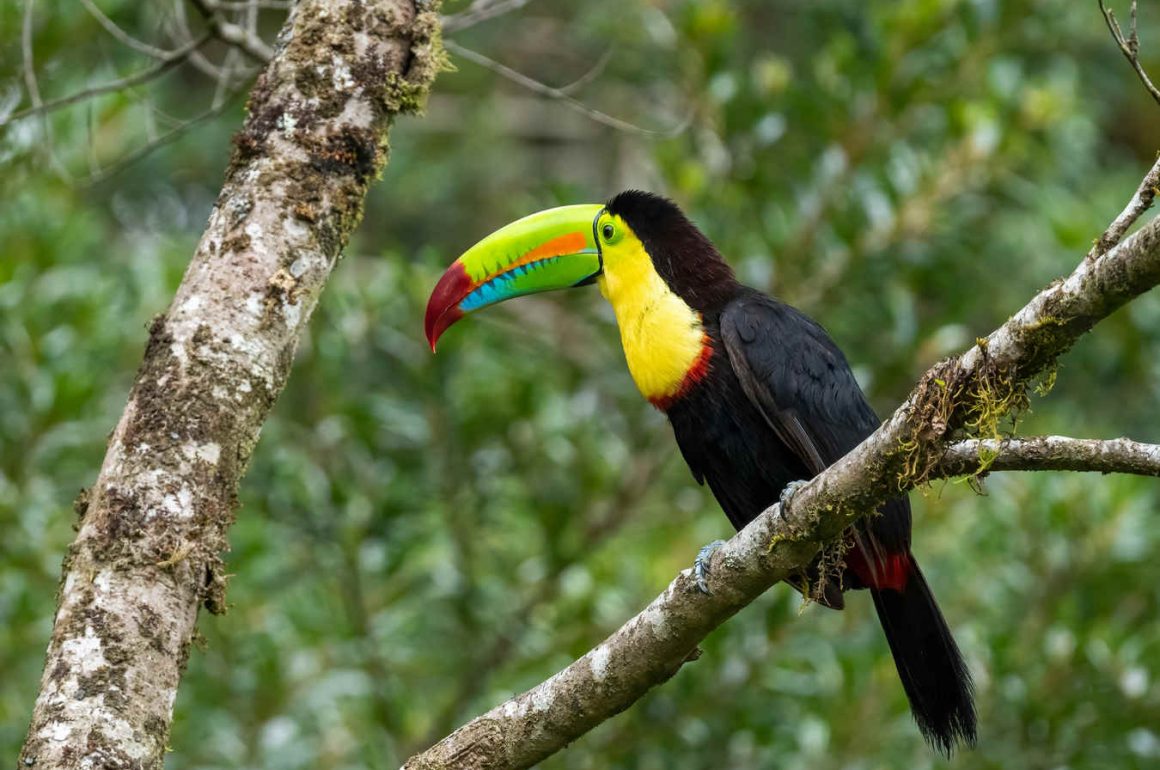
By Grace Waters
Grace Waters is a Senior Editor and Writer at Environment.co. In her role, she guides environmental coverage across a range of topics, including renewable energy, biodiversity, climate adaptation, and green technology. She’s especially passionate about bird conservation and the habitats that support them, with a special interest in inspiring the next generation of birders. Her love of birds likely stems from her two pet parakeets, who keep her entertained at home. When she’s not writing, you’ll find her outdoors with binoculars in hand, observing the world around her.
You’ve trekked up a tropical mountain, binoculars raised, hoping to glimpse birds living amidst veiled peaks. Lately, though, you notice fewer endemics, more generalists, and the mist itself seems to live higher. That’s not just an illusion. Across equatorial regions, cloud forest elevation is shifting. Rising temperatures are squeezing avifauna that depend on this moist, cool environment upward. For many of these creatures, the sky that once buffered them is vanishing.
Cloud forests depend on consistent low-altitude cloud banks — the morning mists and daily humidity — that keep temperatures cool and moisture high. When warming or drought pushes those up, the creatures that depend on them suffer. Here’s what’s happening across the tropics.
Central America
Birds are shifting upslope because their habitats are moving in response to a warming planet. Each year, plants in Mesoamerican jungles climb higher by roughly 1.8 to 2.7 meters, carrying with them the animals that depend on these moist environments. Within just a few decades, this transition has already altered the feathered species that birders encounter at different altitudes.
In Costa Rica’s famed Monteverde Cloud Forest, lower-elevation species have established breeding populations higher in the cloud belt. The Keel-billed Toucan (Ramphastos sulfuratus), once limited to warmer, drier lowlands, now thrives in the highlands. These toucans not only compete for canopy cavities but also prey on the eggs and chicks of upland specialists like the Resplendent Quetzal (Pharomachrus mocinno).
Afrotropical Regions
Over just four decades of surveillance, bird communities in Afrotropical cloud forests have already climbed an average of 93 meters upslope. Much of this shift comes from species losing ground at the lower edge of their range. On average, birds have been pushed up about 183 meters from their lower limits, while their upper limits crept only around 72 meters higher. The result is a shrinking range that leaves the creatures confined to increasingly narrow bands of habitat.
In fact, today’s communities at mid-elevations look a lot like the ones that used to live further down the mountain. Some species went higher in the same forest block, while only the Little Greenbul (Eurillas virens) migrated upslope between different areas. For birds that struggle to cross gaps between woodlands, fragmentation makes it even harder. Creating and protecting continuous montane corridors, especially in regions like the Eastern Arc Mountains, is crucial in providing these creatures with a safe migration route as the climate changes.
Asia-Pacific
Climate change poses a significant threat to the birds of the Western Ghats, especially endemic and high-altitude species. It alters ecosystems, shrinks suitable climatic niches, and disrupts migratory patterns. Rising temperatures and erratic rainfall drive habitat loss and fragmentation, while also shifting suitable ranges upslope. Studies modeling its impacts show that climate change is pushing species such as the Black-and-Orange Flycatcher (Ficedula nigrorufa) and Nilgiri Flycatcher (Eumyias albicaudatus) into mountaintop refugia.
Research further indicates that most species are projected to lose a substantial portion of their climatic niche. The region’s four laughingthrushes — the Banasura Laughingthrush (Montecincla jerdoni), Ashambu Laughingthrush (Montecincla meridionalis), Nilgiri Laughingthrush (Montecincla cachinnans), and Palani Laughingthrush (Montecincla fairbanki) — are the most vulnerable, with up to 99% of their suitable habitat at risk of disappearing.
Implications for Birders and Nature Photographers
Yale’s 2021 Climate Opinion Map shows that 72% or nearly three-quarters of American adults acknowledge global warming is happening. With over 100 million people making more than 10 billion outdoor trips annually in the U.S., this widespread connection to nature makes climate change more visible than ever. For birders, its impacts are tangible. Climate change and shifting habitats mean that what you see or don’t see on your next expedition may look very different from the past.
Endemics could become harder to find, retreating into smaller patches of forest near ridgelines. Birdwatchers may need to hike longer toward higher ground to spot target species. For wildlife photographers, these changes translate to longer waits in more challenging terrain.
Timing is also becoming more critical. Mist, cloud cover, and natural lighting may change seasonally and unpredictably. A morning that once began cloaked in fog might now start dry, with clouds forming later in the day. Photographers need to adapt to these changing windows of opportunity, planning shoots around new weather patterns and trends.
At mid-altitudes, trails and reserves may lose some of their signature cloud-forest atmosphere. With fewer epiphytes clinging to branches, fewer crepuscular insects filling the understory, and more generalist species moving in, the feel of these woodlands will change. Places that once promised a wealth of endemics may no longer guarantee the same level of diversit,y and a recalibration of expectations may be due.
What You Can Do in Your Region
While the general warming of the planet may be unstoppable by a single person, nature enthusiasts can still take steps to help preserve the well-adored cloud forest avifauna. Some actions are personal, while others require collaboration and long-term commitment.
Central America
Help restore degraded cloud-forest edges by joining reforestation walks or donating to local tree-planting drives. You can also support reserves that protect entire elevation ranges, allowing birds to move upslope as climates shift. Avoid visiting during harsh dry spells, when disturbance stresses wildlife the most.
For the best experience, aim for the wet season as birdsong and activity peak then due to increased breeding, though trails can be muddy. Start early, before the clouds roll in, and team up with local guides or conservation groups who know the terrain and species best.
Afrotropical Regions
Advocate for mapping and protecting elevational corridors so the birds you travel to see can continue moving upslope as habitats change. Get involved in monitoring by helping set mist nets, noting species at banding stations, or using recorders to catch calls you might miss in person. Support local patrols that guard high mountain forests from logging and fire.
If you plan a survey, aim for the breeding season, when high-elevation Afrotropical bird communities are most vocal and active. Be prepared for steep climbs and make time to visit during the wet and dry seasons to witness the full rhythm of these woodlands.
Asian Mountain Ranges
Help track shifting cloud-forest altitudes by joining citizen science projects or logging cloud-base changes during your hikes. Lend your voice to campaigns that advocate for buffer zones above today’s tropical jungles, providing the birds with room to move upslope. You can also partner with local NGOs working on climate resilience and habitat protection.
When planning trips, design routes that cross multiple elevations, pack recording gear to capture birds and ambient soundscapes, and aim for the shoulder seasons — those in-between times when the species often reveal their range edges.
Space Above
You might feel the pressure, but the outlook isn’t entirely bleak. Well-planned reforestation efforts strengthen the restoration of carbon sinks and vital habitats. Through precise fieldwork, thoughtful reserve design, and mindful travel practices, you help create room in the sky for species with little left. Every documented bird in its vanishing cloud forest strengthens the case for protecting these last mist-shrouded refuges.
Photo of Keel-billed Toucan in Costa Rica taken by Michael Steinman (from Unsplash at https://unsplash.com/photos/a-colorful-toucan-perched-on-a-tree-branch-wxaLkNTkDy8)






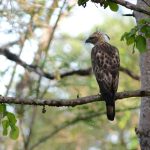
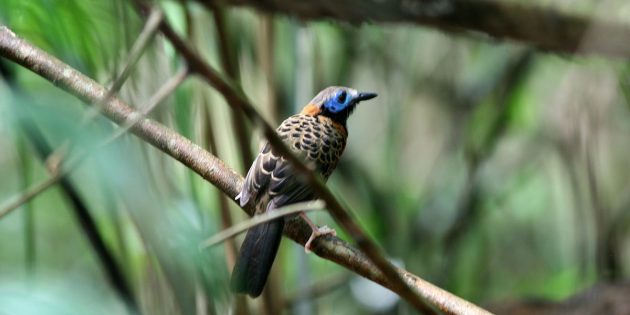
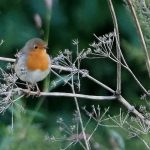
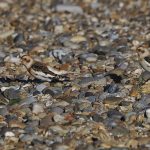
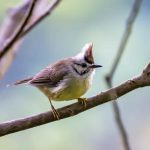


An informative and interesting article that is thought-provoking but fortunately no too depressing. I haven’t visited the Costa Rican cloud forest for 30 years: would I find it very different today than when I was there?